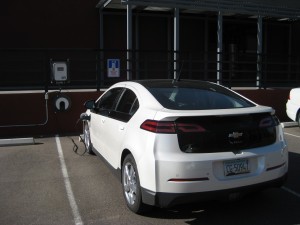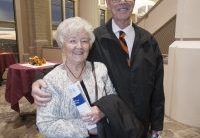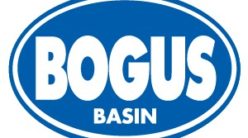By Corey Taule/For the Journal
There are many reasons to like electric vehicles (EVs): They generate no tailpipe emissions, improving air quality, and are powered entirely by electricity, reducing the nation’s dependence on foreign oil. EVs are easier to maintain (no oil to change). And EV owners have been known to speak lovingly about the smooth and instant acceleration not always found in traditional automobiles with their internal combustion engines.
But there are reasons people aren’t purchasing EVs in greater numbers: Cost is a factor. So is the availability of charging stations, especially in rural areas. That’s an issue for many Idahoans because even the most technologically advanced EV’s need to recharge after 250 miles or so.
Experts agree that you’ll see more EV’s on the road when the barriers preventing people from buying them can be overcome. And that brings us to a unique effort being undertaken by an eclectic group of Idahoans.
It includes the nation’s lead nuclear research laboratory; Idaho’s largest electric utility; two major car companies; and a Sun Valley-based nonprofit focused on economic development and environmental sustainability.
As a result, residents of Blaine County will be able to purchase the Nissan Leaf and Chevy Volt for reduced prices from March 1 through May 31.
Here’s how Rev Up Blaine came to be:
Origins
Katie Bray’s roots are in solar. She founded and directed “Clean Energy for Us,” a market-driven and community-based program that helped homes and businesses in the American southeast convert to solar energy.
After moving to Idaho, and taking a job at the Sun Valley Institute for Resilience, Bray oversaw a program that helped Blaine County residents purchase rooftop solar panels. “Solarize Blaine” increased solar energy usage by 500 percent and drove more than $900,000 of new investment in the county.
That got Bray thinking. Why not use the same model to increase electric vehicle usage in Blaine County? After all, similar EV purchasing programs had been implemented in Colorado, California, Utah, Minnesota and Quebec.
So, Bray did her research. And she learned that developing a successful program in Idaho would require three things: funding, expertise and cooperation.
Funding
Idaho National Laboratory (INL) is known worldwide for nuclear energy research and helping keep the nation’s critical infrastructure safe from cyberattacks. Less talked about is the laboratory’s effort to promote education and workforce development in communities across Idaho.
Every year, INL contractor Battelle Energy Alliance (BEA) awards thousands of dollars in technology-based economic development grants. Through the Sun Valley Institute, Bray applied for and received a $15,000 grant to administer Rev Up Blaine.
The EV purchasing program was an excellent fit for the laboratory, which has been a world leader in researching and developing EV batteries and charging station infrastructure.
Also, the Sun Valley Institute for Resilience’s focus compliments that of BEA, a non-profit that seeks to improve the world through scientific achievement and the accumulation of knowledge.
The Wood River Valley isn’t the only community benefiting this year from BEA grants. Programs are also being underwritten in Butte County, north-central Idaho and the Panhandle.
“We work hard to make sure every dollar we give makes a difference,” said Stephanie Cook, INL’s program manager for economic and workforce development.
Expertise
INL contributed more than just funding, however. The laboratory also offered expertise its researchers gained by participating in the world’s largest plug-in electric vehicle and charging infrastructure experiment, and by working alongside six private sector companies to complete groundbreaking tests for wireless charging stations.
Rev Up Blaine will also lean on the knowledge attained by Idaho Power, which has for years been educating Idahoans about electric vehicle technology.
Idaho Power, working with the Sierra Club, hosted National Drive Electric Week in Boise last year. The company has several EVs in its own fleet, including electric utility vehicles and battery-assisted trucks. Also, Idaho Power installed five charging stations of various makes and models at their downtown Boise headquarters.
“EVs are on the rise,” said Idaho Power’s Patti Best, who is serving on Rev Up Blaine’s advisory committee. “They’re good for Idaho Power, because we supply electricity. And they’re good for customers, because they are less expensive to operate and maintain.”
Cooperation
An EV purchasing program would have been a non-starter without cooperation from those who manufacture and market the actual vehicles. Bray’s research showed that Nissan had been involved in all of the purchasing programs on record.
She contacted the dealership in Boise, which offered to sell Blaine County residents the 2017 Nissan Leaf at a reduced rate (roughly 30 percent off) for the three-month period beginning in March.
Chevrolet is also part of Rev Up Blaine. It will sell its Volt at cost during those three months, eschewing the customary 7-8 percent markup. These discounts, along with a $7,500 federal tax credit for EV purchases, mean customers could walk away with a $37,000 car for less than $30,000.
“It’s just a good thing to do,” said John Wright, new vehicle manager for Peterson Chevrolet, Buick and Cadillac in Boise. “It’s a good thing to get electric vehicles on the road.”
Overcoming barriers
For three months at least, cost will be less of an impediment to an electric vehicle purchase in Blaine County. “Range anxiety,” however remains an issue.
Hilary Sinnamon, who lives in the area and works on EV policy on the national level, said she and her husband are excited about the purchasing program. The Sinnamon family hope to purchase a Chevy Bolt, which is fully electric has a longer range than the Leaf. The Bolt is available only in California, Oregon, Washington and a couple states on the east coast now, but Wright said a waiting list has already accumulated in Idaho.
Building up charging infrastructure will occur over time. And it will also take time for folks to become accustomed to a new reality. While most will charge their vehicles at home, and use them to commute to work and back, there will be times when a charge away from home becomes necessary. A typical AC level two slow charge can take four to eight hours and a typical fast charge 30 minutes. It’s different than stopping at the corner gas station and filling the tank.
“It’s certainly not something we’re used to with our conventional infrastructure,” said INL researcher Matthew Shirk, who will advise Rev Up Blaine on charging infrastructure.
That mindset does appear to be changing. Worldwide sales of EVs increased more than 50 percent in the first half of 2016. In the U.S., EV sales went up 59 percent from January 2016 to January 2017. Battery costs over the last decade have decreased 70 percent and the number of public charging stations has jumped from 500 in 2008 to more than 15,000 today.
This effort is now extending to the intermountain west. The U.S. Department of Energy recently awarded a $4 million grant to develop electric highway corridors in Utah, Wyoming and Idaho.
Best said Idaho Power incentivized a charging station installation in Ketchum. And that’s good because a look at those few communities who have implemented EV purchasing programs shows this infrastructure is needed.
For instance, in Colorado, Nissan Leaf sales tripled as a result of a purchasing program based in Boulder. Another, in Fort Collins, saw Nissan run though its supply of 2015 Leafs in seven days. A Salt Lake City program was so successful it was extended for a month.
“I’m really excited to see what comes of it,” Best said. “One good thing about EVs is they bring a lot of diverse interests together to work for a common cause.”
Spreading the word
Talk to people involved in Rev Up Blaine and you hear enthusiasm. That’s what happens when folks have an opportunity to participate in a project they genuinely believe will improve lives and make the world a better place.
Bray said that despite no organized advertising campaign, folks are beginning to hear about the purchasing program and are excited.
“People have heard about it, and they are psyched,” Bray said.
That’s why this unusual coalition is putting so much into this effort. If Rev Up Blaine is successful, perhaps somebody in the Treasure Valley, eastern Idaho or Panhandle will take notice. It could be a non-profit such as the Sun Valley Institute for Resilience, a private sector company wanting to do something for its employees, or a branch of local government seeking to improve the community.
There is no single way this has to be done. Programs in other states have been sponsored by a government agency, a nonprofit and a university. All it really takes is a driving force, such as Bray and the Sun Valley Institute for Resilience, as well as partners like INL, Idaho Power, Chevrolet and Nissan, who are eager to help.
“I think it’s such a great blueprint,” Sinnamon said. “When you see a benefit, even in a place as small as the Wood River Valley, you hope you get the snowball effect.”





